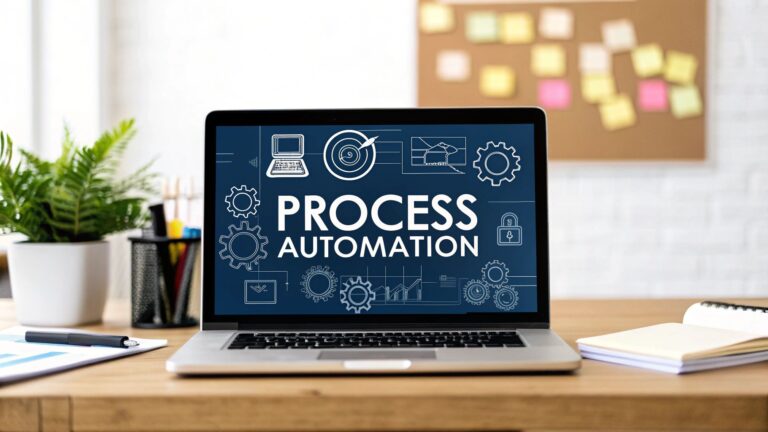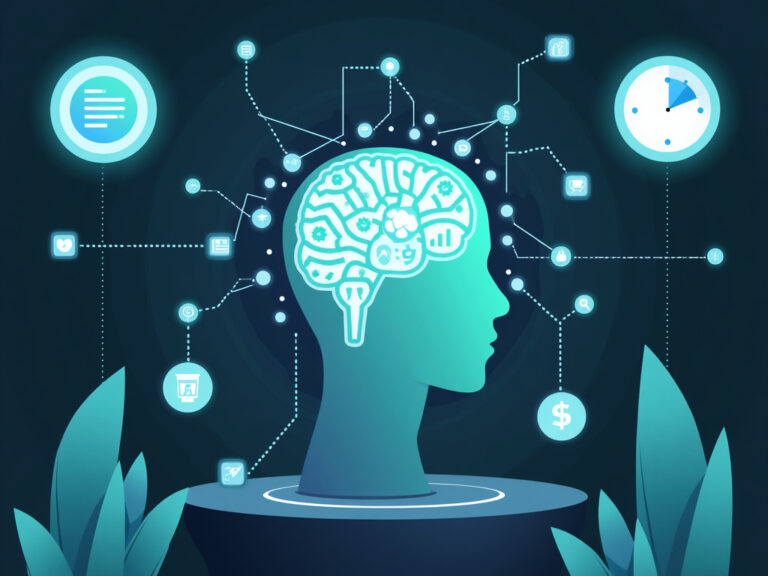Comprehensive How-to Approach For Seamless AI Workflow Automation
Most professionals today face a daunting challenge in optimizing their processes efficiently; however, with the right strategies, you can transform your operations through seamless AI workflow automation. This comprehensive how-to guide will equip you with the tools and knowledge to streamline your tasks, mitigating the risks of errors and enhancing productivity. You’ll discover how to implement AI effectively while also learning about the positive impacts it can bring to your business landscape. For further insights, check out What is Seamless AI and How to Use It? A Complete Guide.
Key Takeaways:
- Integration: Ensure smooth integration of AI tools with existing systems for seamless workflow automation.
- Scalability: Design workflows that can easily scale to accommodate growing data and operational demands.
- Data Quality: Maintain high data quality standards to enhance the accuracy and performance of AI models.
- Feedback Loops: Implement continuous feedback loops to refine processes and improve AI model outputs.
- User Training: Prioritize training for users to maximize the benefits of AI automation and minimize resistance.
Understanding AI Workflow Automation
For many organizations, AI workflow automation represents a transformative solution to streamline processes, enhance productivity, and reduce operational costs. By automating repetitive tasks and integrating intelligent systems, you can create workflows that maximize efficiency and adaptability. This approach not only improves your overall productivity but also allows your team to focus on more strategic initiatives, driving innovation and growth.
What is AI Workflow Automation?
There’s a growing trend in leveraging AI to automate workflows, which involves using artificial intelligence technologies to optimize and manage various processes within an organization. This automation can range from simple task management to complex decision-making, ensuring that work is executed efficiently and accurately, thus minimizing errors and freeing up your resources.
Benefits of Implementing AI in Workflows
There’s a wide array of benefits associated with implementing AI in workflows, including increased efficiency, reduced operational costs, and enhanced decision-making capabilities. By integrating AI into your systems, you can process and analyze data at an unprecedented speed, leading to quicker and more informed decisions. Furthermore, this technology offers significant opportunities for innovation as it automates mundane tasks, allowing your team to concentrate on more pressing objectives.
Understanding the advantages of AI workflow automation reveals how it can fundamentally improve your organization’s operations. You’ll find that enhanced efficiency allows you to meet deadlines more effectively, while cost reduction can substantially improve your bottom line. Additionally, AI-powered analytics promote better decision-making by providing actionable insights derived from large datasets. Embracing this technology not only optimizes your current processes but also fosters a culture of innovation, positioning your organization as a forward-thinking leader in your industry.
How to Identify Suitable Processes for Automation
Even the most promising automation tools won’t create value if applied to the wrong processes. To identify suitable workflows for automation, you should look for repetitive and time-consuming tasks that consume your team’s resources. Focus on processes with standard steps that can be easily defined and measured, as these are prime candidates for AI workflow automation that will yield efficient results.
Assessing Workflow Complexity
Assuming a process can be effectively automated, evaluating its complexity is vital. Analyze how many steps are involved, the variations within the workflow, and the dependencies on human decision-making. A straightforward workflow with few complexities is typically the best candidate for automation, allowing you to maximize efficiency and minimize errors.
Prioritizing Tasks for Automation
There’s a need to prioritize tasks that will deliver the highest impact when automated. Start by evaluating the time spent on each task, the frequency of its occurrence, and the potential for human error. You want to automate tasks that burden your resources yet add little value.
Plus, focusing on tasks that are highly repetitive and time-intensive can significantly boost your efficiency. Automating these time-consuming tasks not only reduces the risk of human error but also frees up your team to concentrate on higher-value activities. Make sure to assess the impact on overall productivity and how these changes can lead to improved outcomes for your organization. Prioritization ensures that you’re investing your automation efforts where they will pay off the most.

Factors to Consider Before Implementation
All successful AI workflow automation begins with a careful assessment of several key factors:
- Organizational readiness
- Technology compatibility
- Data integrity
- Change management
- Compliance and security
Understand your environment before plunging into automation. The insights you’ll gain can significantly influence the trajectory of your AI transition. For further details, check out these 9 Steps to Seamless AI Integration: Boost Efficiency ….
Technology Readiness
Clearly, evaluating your organization’s technology readiness is a foundational step in implementing AI automation. You should assess whether your current infrastructure can seamlessly support AI tools and whether any upgrades or integrations are necessary.
Resource Allocation and Skillset
Assuming you have the right tools, the next step involves evaluating your resource allocation and skillset. You need to ensure that your team possesses the necessary capabilities to not just manage but thrive in the new AI environment.
To maximize the potential of AI workflow automation, focus on developing both technical and soft skills within your team. Training your workforce in AI technologies can significantly enhance effectiveness. Additionally, proper resource allocation means not just budgeting for software, but also considering staffing needs, as a lack of expertise can lead to implementation delays and increased costs. By investing in your team’s skills, you create a more agile and competent environment ready to embrace AI solutions.
How-to Design an Effective AI Workflow
Now, designing an effective AI workflow requires a structured approach that aligns your objectives with the technological capabilities of AI. You must identify key processes, define the necessary resources, and ensure the flow of data supports your desired outcomes. By taking a systematic approach, you can avoid common pitfalls and create a workflow that is both efficient and scalable.
Mapping Out Workflows
To begin, you should map out your existing workflows to pinpoint inefficiencies and opportunities for automation. This visual representation will help you understand how information flows or where bottlenecks occur, allowing you to create a more streamlined process. Be sure to include input and output stages, stakeholders, and decision points for comprehensive visibility.
Incorporating Human Oversight
Now, it’s vital to incorporate human oversight into your AI workflow. While AI can handle vast amounts of data and perform repetitive tasks efficiently, there will always be scenarios that require human judgment and intervention. This oversight ensures accountability and maintains the quality of outcomes that machines alone may overlook.
A well-structured integration of human oversight not only enhances trust in your AI systems but also minimizes risks associated with automation, such as errors or unintended biases. By keeping a human in the loop, you allow for critical assessment of AI decisions, fostering innovation and improved decision-making. This practice helps you effectively balance the efficiency of AI with the invaluable insight and creativity that only humans can provide.
Tips for Successful AI Integration
Keep your focus on a few key areas to ensure a smooth AI integration. Prioritize clear communication among teams, invest in proper training for potential users, and dedicate resources for system updates. Additionally, establish realistic expectations to maintain morale and keep stakeholders aligned. The path to AI success is paved with continuous engagement and measurable outcomes.
Training Employees
If you want to maximize the effectiveness of your AI systems, investing in comprehensive training for your employees is necessary. Equip them with the knowledge and skills needed to adapt to new technologies, and foster a culture of openness towards ongoing learning.
Continuous Improvement Feedback Loops
On the journey to AI excellence, establishing feedback loops is vital. These loops help you gather insights from users, allowing for the real-time adaptation of AI systems based on their experiences and needs.
Loops create an ongoing dialogue that not only enhances user satisfaction but also enables constant optimization of your AI workflows. By actively seeking feedback, you can identify weaknesses and uncover opportunities for improvement. Addressing any challenges early on helps prevent potential setbacks, ensuring a smooth integration process. Ultimately, fostering these feedback loops empowers your organization to harness the full potential of AI technology.

How to Measure and Optimize AI Workflow Performance
Your ability to measure and optimize your AI workflow performance is vital for success. By implementing a robust evaluation system, you can identify areas for improvement and enhance your overall efficiency. For a deeper understanding, check out the Complete Guide On Building An AI Workflow.
Key Performance Indicators (KPIs)
With the right Key Performance Indicators (KPIs), you can effectively evaluate the success of your AI workflows. KPIs such as accuracy, efficiency, and resource utilization will provide valuable insights, allowing you to benchmark performance and identify trends over time.
Data-Driven Adjustments
On a constant quest for improvement, data-driven adjustments are vital. By utilizing analytics and performance metrics, you can make informed decisions that lead to enhanced accuracy and efficiency in your workflows.
The implementation of data-driven adjustments enables you to stay ahead of issues before they escalate. Regularly analyzing performance data will help you identify patterns and anomalies, allowing for timely modifications in your approach. Leveraging historical data means you can optimize processes that yield positive results, leading to increased productivity and cost-effectiveness while eliminating those practices that hinder progress.
Conclusion
Ultimately, implementing a comprehensive how-to approach for seamless AI workflow automation empowers you to streamline operations and enhance productivity. By systematically assessing your needs, integrating appropriate tools, and continuously optimizing processes, you can create a robust automated workflow that aligns with your objectives. This not only saves time but also allows you to focus on strategic tasks, fostering innovation and growth within your organization. By following these guidelines, you can confidently navigate the complexities of AI automation and harness its potential for your success.
FAQ
Q: What is a comprehensive how-to approach for seamless AI workflow automation?
A: A comprehensive how-to approach for seamless AI workflow automation involves creating a systematic strategy that integrates AI technologies into business operations efficiently. It encompasses understanding the specific tasks that can benefit from automation, selecting appropriate AI tools and platforms, designing workflows that incorporate AI solutions, and ensuring smooth data flow between systems. Additionally, this approach includes continuous monitoring, testing, and optimization to enhance performance over time. Ultimately, it aims to improve productivity and reduce operational inefficiencies.
Q: What are the key stages involved in implementing AI workflow automation?
A: The key stages in implementing AI workflow automation include:
1. Assessment: Analyze existing workflows to identify areas that can be automated. This involves evaluating both the technical requirements and the human aspects of the processes.
2. Selection of Tools: Research and select AI tools that align with your automation goals, considering factors such as compatibility, scalability, and user experience.
3. Design and Development: Create a detailed design of the automated workflow, specifying how data will be captured, processed, and utilized. This often includes developing custom scripts or utilizing pre-built widgets from AI platforms.
4. Testing and Deployment: Rigorously test the automated workflows to ensure they function as intended before full-scale deployment. This stage may also involve user training to help staff adapt to the new system.
5. Monitoring and Optimization: After deployment, continuously monitor the workflows for performance metrics. Collect feedback and make necessary adjustments to enhance efficiency and effectiveness.
Q: What are the benefits of automating workflows with AI technology?
A: Automating workflows with AI technology offers numerous benefits, including:
1. Increased Efficiency: AI can handle repetitive tasks at a faster pace than humans, freeing up time for employees to focus on more strategic roles.
2. Improved Accuracy: Automation minimizes the chances of human error. AI algorithms can process large datasets with precision, leading to higher quality outputs.
3. Scalability: Automated workflows can easily adapt to increased workloads or changes in business processes without the need for proportional increases in personnel.
4. Enhanced Decision Making: AI can analyze data in real-time to provide actionable insights, enabling organizations to make quicker and more informed decisions.
5. Cost Reduction: Over time, automation can lead to significant cost savings by reducing operational expenses, such as labor costs and time spent on manual tasks.







